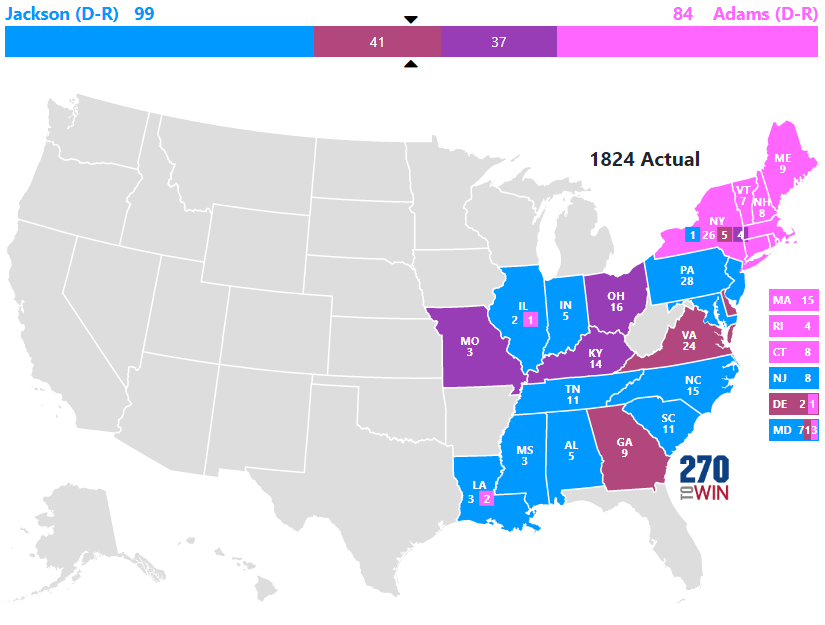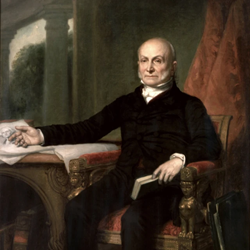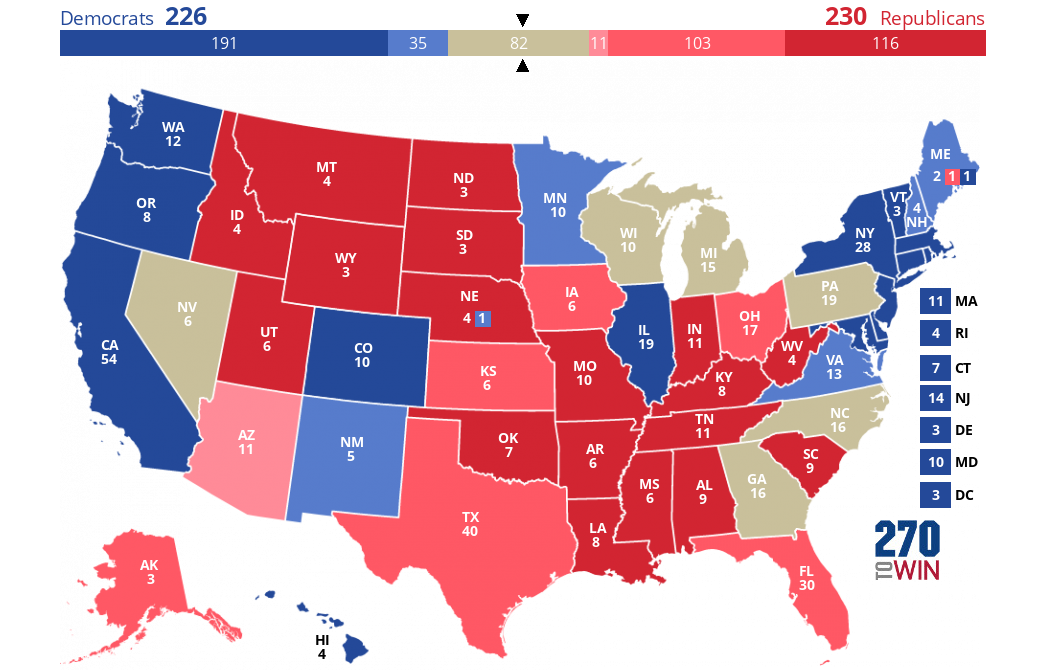1824 Presidential Election
In the United States presidential election of 1824, John Quincy Adams was elected President on February 9, 1825, after the election was decided by the House of Representatives. The previous few years had seen a one-party government in the United States, as the Federalist Party had dissolved, leaving only the Democratic-Republican Party. In this election, the Democratic-Republican Party splintered as four separate candidates sought the presidency. Such splintering had not yet led to formal party organization, but later the faction led by Andrew Jackson would evolve into the Democratic Party, while the factions led by John Quincy Adams and Henry Clay would become the National Republican Party and later the Whig Party.
This election is notable for being the only time since the passage of the Twelfth Amendment in which the presidential election was decided by the House of Representatives, as no candidate received a majority of the electoral vote. This presidential election was also the only one in which the candidate receiving the most electoral votes did not become president (because a majority, not just a plurality, is required to win). It is also often said to be the first election in which the president did not win the popular vote, although the popular vote was not measured nationwide. At that time, several states did not conduct a popular vote, allowing their state legislature to choose their electors.
Source: Wikipedia
1824 Election Results
| Candidate | Party | Electoral Votes | Popular Votes | ||
|---|---|---|---|---|---|
| Andrew Jackson | Democratic-Republican | 99 | 153,544 | ||
| ✓ | John Quincy Adams | Democratic-Republican | 84 | 108,740 | |
| William H. Crawford | Democratic-Republican | 41 | 40,856 | ||
| Henry Clay | Democratic-Republican | 37 | 47,531 |

1824 Election Facts
- Delaware moves from 4 back to 3 votes; and has maintained that number to this day
- No candidate received a majority of Electors, Adams elected by vote of House of Representatives
- 1st election where popular vote retained for history; eventual winner Adams received only about 32%
- Adams is the son of 2nd President, John Adams
- Delaware electors split their vote: 2 for Crawford, 1 for Adams
- Illinois: A district-based system was used, similar to ME/NE today. Although Adams won more votes statewide, Jackson won 2 districts, Adams 1.
- Louisiana electors split their vote: 3 for Jackson, 2 for Adams
- Maryland: A district-based system was used, similar to ME/NE today. Districts 3 and 4 voters each chose two electors. In all, Jackson won 7 electoral votes, Adams 3, Crawford 1.
- New York electors split their vote: 26 for Adams, 5 for Crawford, 4 for Clay, 1 for Jackson
- Issues of the Day: Monroe Doctrine
- Only presidential election where the person receiving the most electoral votes did not win; also only election (since passage of 12th Amendment) where election decided by House of Representatives.


